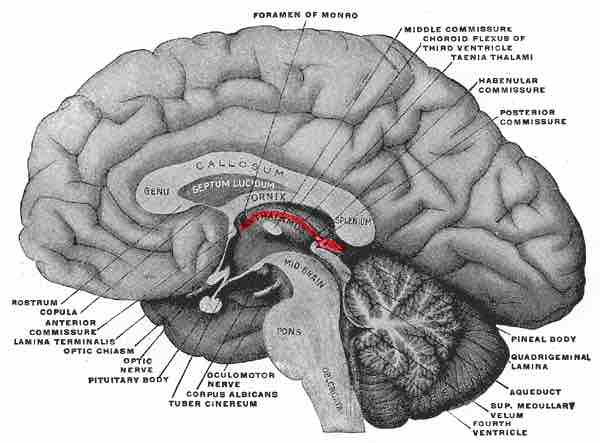The epithalamus is a dorsal posterior segment of the diencephalon (as shown in the figure below).

The Epithalamus
A brain sectioned in the median sagittal plane. The epithalamus is labeled in red.
It includes the habenula and their interconnecting fibers (the habenular commissure), the stria medullaris, and the pineal gland. The habenular commissure is a band of nerve fibers situated in front of the pineal gland that connects the habenular nuclei on both sides of the diencephalon. The stria medullaris, also known as stria medullaris thalami, is a fiber bundle containing afferent fibers from the septal nuclei, lateral preoptic hypothalamic region, and anterior thalamic nuclei to the habenula.
Pineal Gland
The pineal gland (also called the pineal body, epiphysis cerebri, epiphysis, conarium, or the "third eye”) is the only unpaired midline brain structure. It is about the size of a grain of rice (5–8 mm) in humans. The pineal gland lies between the laterally positioned thalamic bodies and behind the habenular commissure. It is located behind the third ventricle and is bathed in cerebrospinal fluid supplied through a small pineal recess of the third ventricle.
Epithalamic Function
The epithalamus acts as a connection between the limbic system and other parts of the brain. Some functions of its components include the secretion of melatonin by the pineal gland (involved in circadian rhythms) and regulation of motor pathways and emotions. It is wired with the limbic system and basal ganglia.